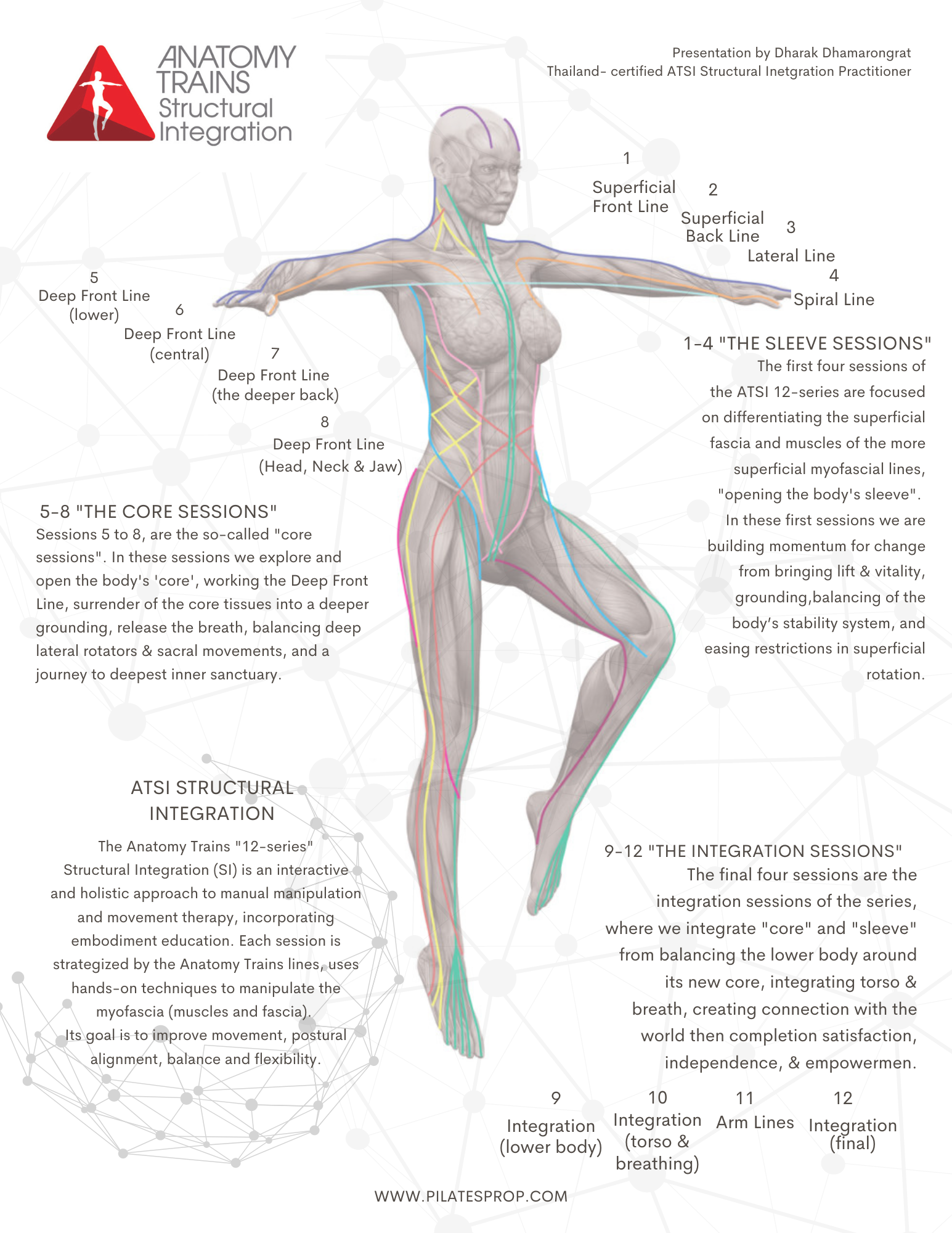
Anatomy Trains Structural Integration (ATSI)
"The art, the science, and the craft" of healing with touch was developed by Tom Myers
It incorporates the principles and myofascial techniques from Rolfing, the original form of structural integration created by Dr Ida Rolf in the 1970s. Anatomy Trains Structural Integration have been adapted around the myofascial meridians called Anatomy Trains discovered and published by Tom Myers.
"The Anatomy Trains SI approach is to free the binding and shortening in these connective tissues, what we refer to as the fascial network, and to re-educate the body in efficient and energy-sustaining patterns."
Each session is strategized by the Anatomy Trains lines, uses hands-on techniques to manipulate the myofascia (muscles and fascia). Its goal is to improve movement, postural alignment, balance and flexibility.
As a result, it can be excellent at helping long term chronic problems like backache, neck and shoulder pain, as well as improving our poor postural habits, wellbeing and quality of life.

Anatomy Trains Structural Integration
ATSI uses the Anatomy Trains map to provide logical reason for the progression of the "12-series of SI sessions".
The Anatomy Trains include:
The superficial front line
The superficial back line
The lateral line
The spiral line
The deep front line
The superficial front arm lines
The deep front arm lines
The superficial back arm lines
The deep back arm lines
The front functional line
The back functional


"...SI seeks to organize the body closely around the vertical line of gravity and lengthen it along that line"
-Tom Meyers
The ATSI ‘recipe’ for structural integration is based around the “Anatomy Trains Myofascial Meridians”concept which is explained in the book written by Thomas Myers, published by Harcourt Brace (Elsevier) in 2001 and a 2nd edition in 2008.
There are "3 Series" which is an introduction to structural bodywork and "12 series", a full Anatomy Trains Structural Integration series includes 12 sessions.
The 3 series uses the principles of Structural Integration to integrate the pelvic girdle, shoulder girdle and spine. Each session ends with gentle balancing work. Clients often leave each treatment feeling lighter or more grounded.
The 12 series is a significant Anatomy Trains SI approach which stated "to free the binding and shortening in these connective tissues, what we refer to as the fascial network, and to re-educate the body in efficient and energy-sustaining patterns".
"I earnestly found myself in a deep ocean of truthfulness when I explore the world underneath the skin. ATSI pathway has developed my humble beginnings and deepened connection with myself when I practice movement as well as refined my intuition with touch.
My intention aims to encourage individuals, especially woman, to reconnect with their authentic self, to understand their body which can enhance self-awareness, be able to release emotional burdens, and promote personal growth. I love movements and bodywork. Being the first Thai ATSI practitioner, I'm enthusiastic about sharing this "Art of healing" with my community." - Dharak
Before signing up for ATSI Structural Integration program, an initial consultation for new clients is required. This session includes:
- Client history & profiling (photo taking)
- Posture & functional movement assessment
- Myofascia treatment
- consultation and appointment for follow up sessions with Structural Bodywork or ATSI Structural Integration